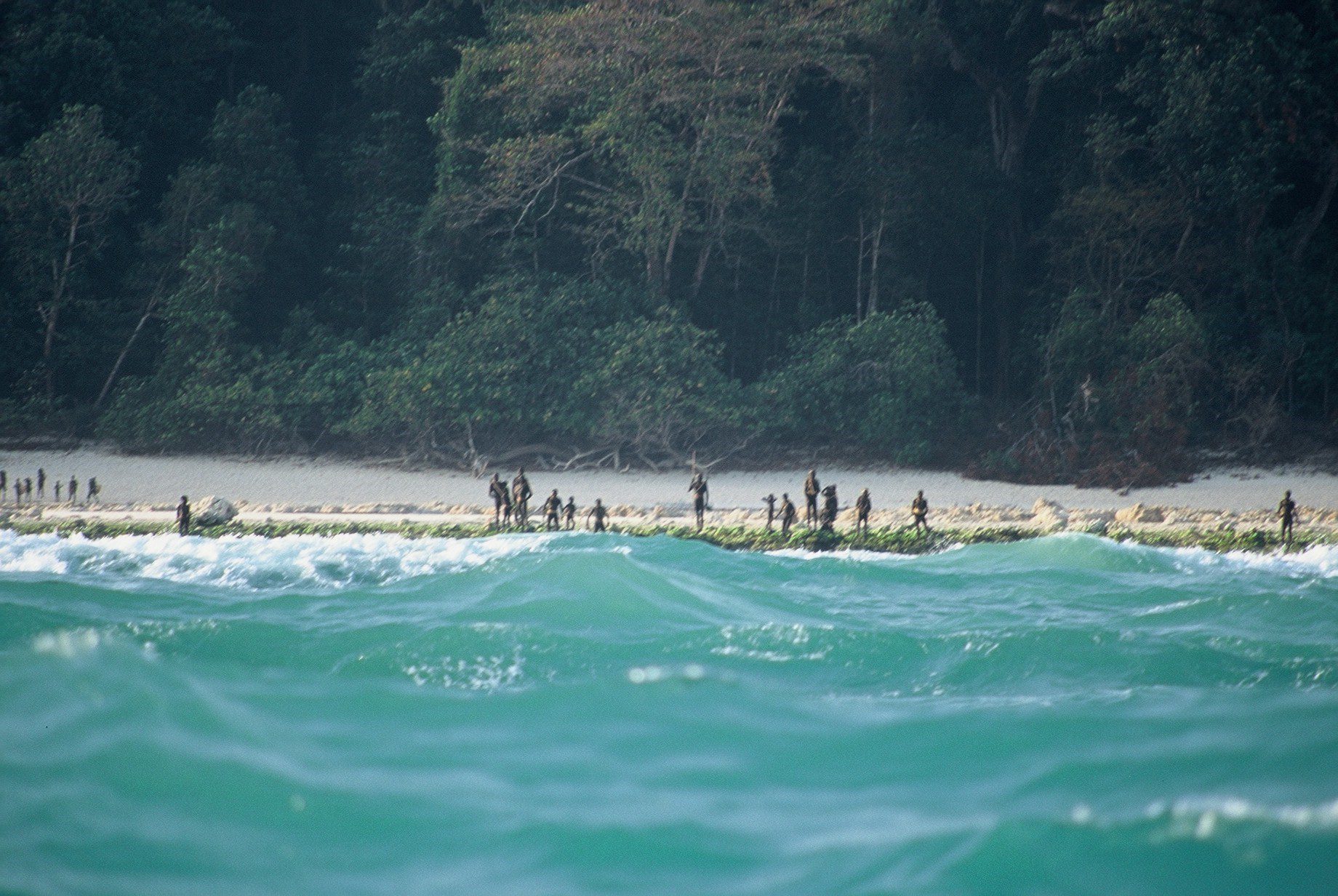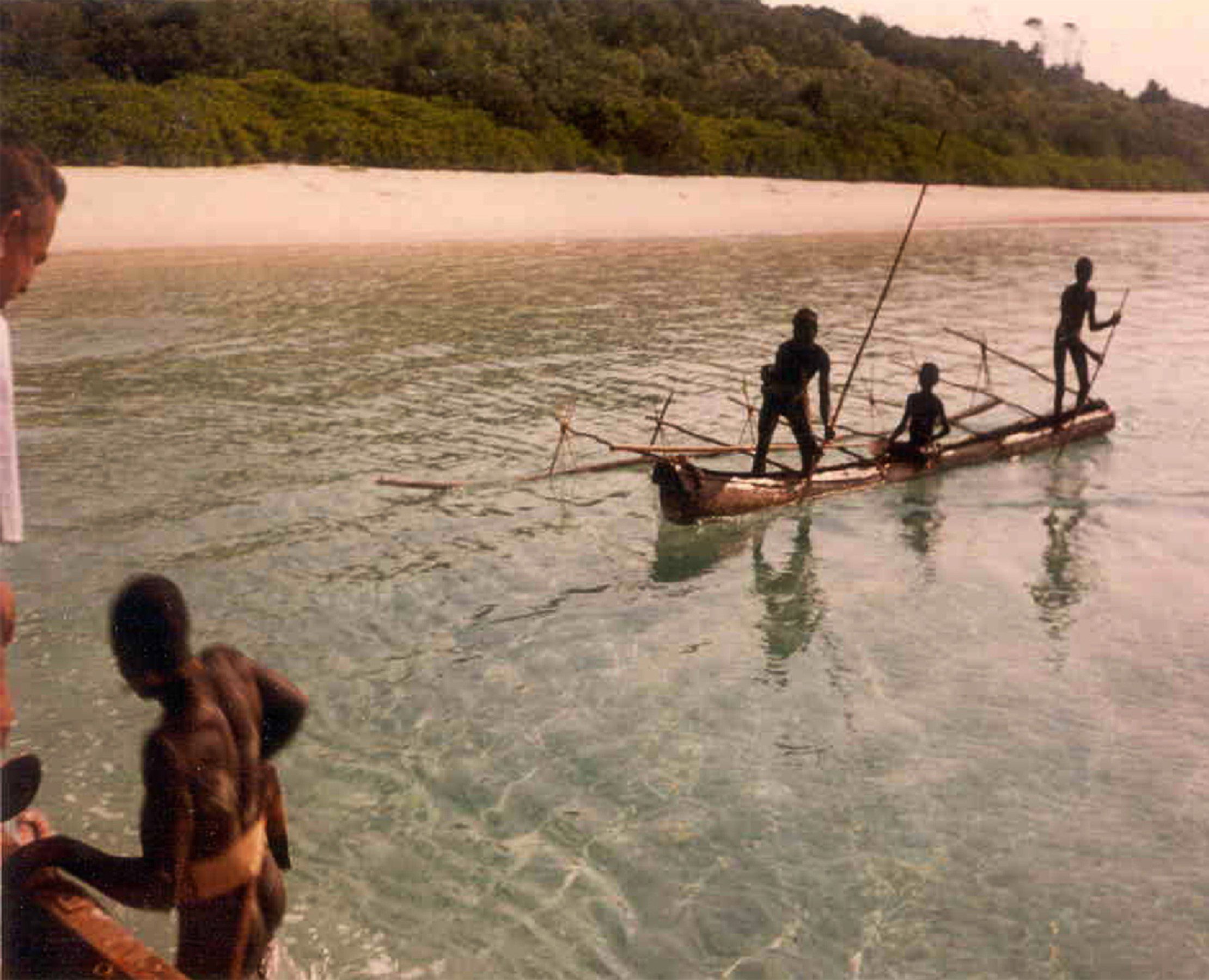There are 100 or more “uncontacted” tribes around the globe, but the Sentinelese are undoubtedly the most isolated. Against the colossal forces of colonialism and economic globalization, they have resisted almost all attempts at contact from the outside world for thousands of years – sometimes with violence.
The Sentinelese made international headlines in 2018 when a Christian missionary from the US illegally intruded onto their island, where he was killed by a bow and arrow. However, this sensational incident is just one very small part of their story.
The tribe lives on North Sentinel Island, a Manhattan-sized patch of land found between India and Myanmar in the Indian Ocean. It’s illegal to go within five nautical miles (9.26 kilometers) of the island under Indian law, primarily to respect their traditional way of life and protect them from outsiders’ diseases, to which they have no immunity.
To the east of their small island, there is an archipelago known as the Andaman Islands, but even these neighboring communities have scarcely connected with the Sentinelese in recorded history.
“This makes them the most isolated tribe in the world because they don’t even have neighbors. Most uncontacted tribes have neighbors that they might have some sort of trade with or bump into in the forest, but the Sentinelese really have no one,” Sophie Grig, Senior Research and Advocacy Officer at Survival International, told IFLScience.
“The extent of the isolation with Sentinelese is unique,” she added.

A group of the Sentinelese stand on the shores of their island in the Indian Ocean.
Image credit: © Christian Caron, Courtesy of Survival International
Given this extreme isolation of the Sentinelese, however, the wider world knows next-to-nothing about how they live.
The Census of India 2011 estimated that just 15 people live on North Sentinel Island, although the real figure is thought to be around 100 people.
Using reports from people who have observed the island from afar in a boat, it’s believed the 100 or so individuals live in three separate bands. Their settlements are made up of two different types of houses: large communal huts and temporary make-shift shelters with no walls.
“Most of what we know about their way of life is gleaned from what can be seen from the boats from a distance. We don’t even know what they call themselves,” noted Grig.
Grig has worked the Sentinelese campaign for Survival International, an NGO forged to protect the rights of tribal peoples, that has sought to ensure their desire to remain uncontacted is respected.
The Sentinelese have made their wish to be left alone very clear.
In the 1970s, the Indian government set up a policy to try to make contact with the Sentinelese with the ultimate goal of teaching them agriculture and forcibly settling them into their society. They would send boats and offer gifts to the tribe, despite not knowing their language. The Sentinelese largely rebuffed these attempts, drawing their bows at the visitors to know they were not welcome.
“There was a brief period in the 1990s where the Sentinelese actually let them get close enough, land on the beach, and took some of the coconuts. Then, no one really knows why, but stopped allowing this and started being more hostile again,” said Grig.
“Whether that’s because some people [from the tribe] caught diseases, we don’t know,” she added.
Following protests by Indigenous rights groups, India’s government ditched its clumsy plan to make contact in the late-1990s and the Sentinelese have continued to express hostility to the outside world. Along with the death of the Christian missionary in 2018, the past few years have seen a number of incidents where the Sentinelese have reacted aggressively to outsiders.
The Indian National Coast used a helicopter to cruise over the island to see if the community needed assistance in the wake of the devastating tsunami that rocked the Indian Ocean in December 2014. To their surprise, a lone individual stalked their helicopter and attempted to strike it with arrows. Cleary, no help was wanted.
Another incident occurred in 2006 when two fishermen from India accidentally washed on the island (some say after a night of heavy drinking) and were promptly killed by the Sentinelese.
“They are making a clear choice and a very clear statement to the world that they wish to remain uncontacted and to be left alone,” explained Grig.
“No one makes that clearer than the Sentinelese,” she added.
If you take a look at their history during the colonial era, it is very easy to understand why the Sentinelese want to keep their distance from outsiders.

A photo of the Sentinelese believed to be from the brief period in the 1990s when they allowed some contact with outsiders.
Image credit: © A. Justin, An. S.I.. Courtesy of Survival International
In 1880, British Royal Navy officer Maurice Vidal Portman sent a party to make contact with the people of North Sentinel Island. Upon arriving on the shore, the islanders fled into the treeline and the British stepped food on their on the island, finding nothing but abandoned villages. Eventually, Portman’s men captured six people – an elderly man and woman, plus some children – who were shipped back to their base on the nearby Andaman Islands.
“Inevitably, they all got very sick. The elderly couple died and the colonists thought that it would be a brilliant idea to just dump the children back on the island. The children were taken back with some gifts, but almost certainly the biggest gift they took back with them was disease,” noted Grig.
“We don’t know, but it’s possible that the reason that the Sentinelese are so resistant to outsiders is that they have a sort of memory of that contact,” she suggested.
Against all odds, however, the Sentinelese are still here and thriving.
“A few years ago, people were saying it’s completely impossible that uncontacted people can survive the future. Actually, we now know of more uncontacted people than we knew of a decade ago,” said Grig.
“They’ve lived on this island for thousands of years, possibly tens of thousands of years. They’re incredibly healthy-looking, they’re thriving, and they’re clearly choosing to live that way of life,” she adds.
“There’s an enormous cause for optimism,” concluded Grig.
Despite this optimism, this isn’t to say that the Sentinelese – as well as the 100 or so other uncontacted tribes of the world – are not still under threat from deforestation, climate change, economic exploitation, colonization, and the spread of disease.
If you wish to support the rights of uncontacted tribes, the most important rule is to stay away and respect their wishes to be left alone. Beyond that, there’s plenty of information out there that can educate you about the specific threats that challenge this diverse group of people.
Survival runs a number of campaigns for the rights of uncontacted tribes, which you can find more information about on their website. There also have a pledge, which people can sign to pressure governments, policymakers, and corporations to protect the lands of uncontacted peoples for exploitation.
Source Link: The Sentinelese: Who Are The Most Isolated Uncontacted Tribe On Earth?